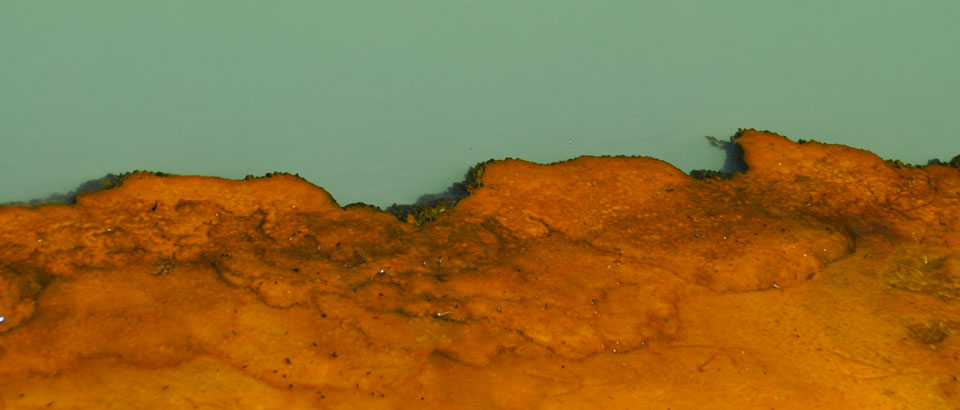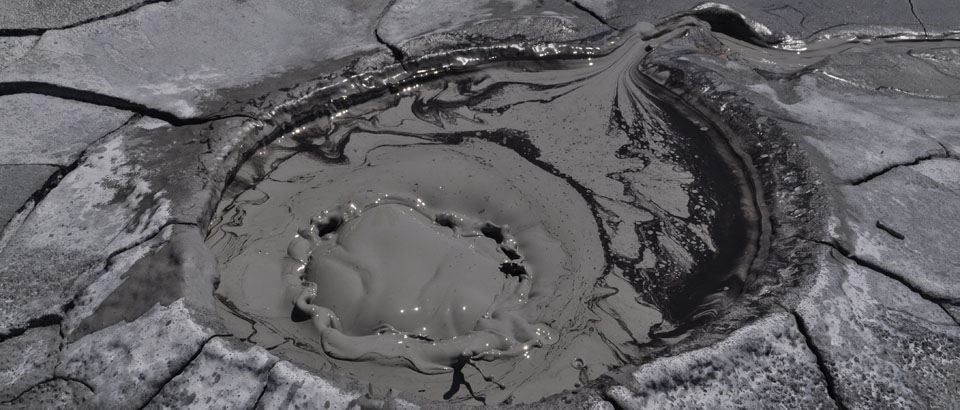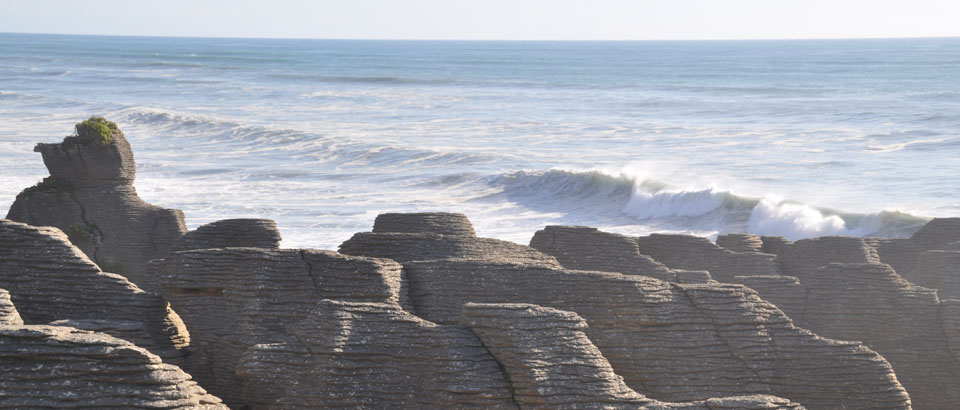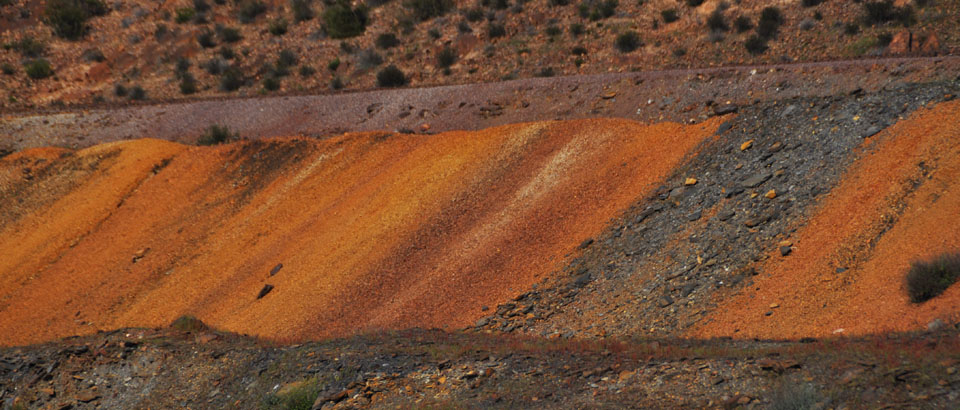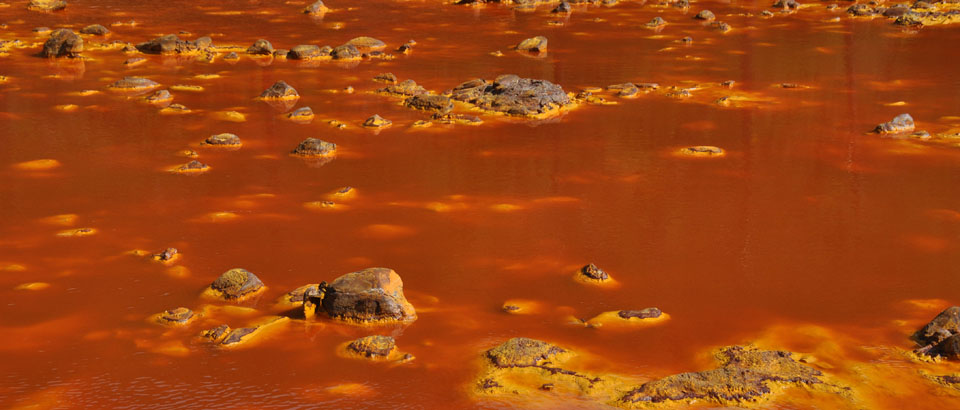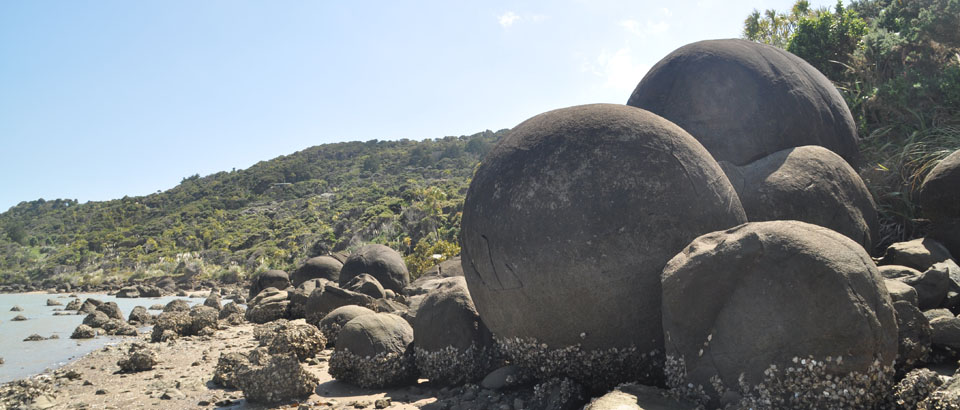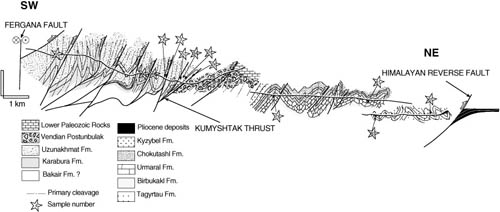The structure and the phyllosilicates (chemistry, crystallinity and texture) of Talas Ala-Tau, Tien-Shan, kirguiz Republic): comparison with more recent subduction complexes. I Abad, G.Gutiérrez-Alonso, F. Nieto, I. Gertner, A. Cabero, 2003, Tectonophysics, 365, 103-127. DESCARGAR-DOWNLOAD.
RESUMEN-ABSTRACT
Geological mapping and structural analysis of the Talas Ala Tau (Tien Shan, Kyrgyz Republic) have revealed a complex structure composed of folds with axial-plane cleavage and thrust faults verging towards the NE. The main structures of the range correspond to minor Tertiary and Carboniferous–Permian deformation superimposed on the main deformation event that took place during the Baikalian orogeny. The pervasive axial-plane cleavage diminishes in penetrativity from the hinterland to the foreland in both the Uzunakhmat and Karagoin sheets. The main thrusts developed phyllonitic shear-related rocks on the hangingwall immediately above the thrust planes. A crystal-chemical study of the phyllosilicates growth during the Baikalian deformation event along a cross-section revealed changes in the crystallinity, composition and lattice parameters of them. The phyllosilicates present in the Talas Ala Tau rocks were crystallized in very low-grade metamorphic conditions, that is below 300 °C, as indicated by their Kübler Index (KI), which decreases from SW towards the NE. Detailed TEM study of the phyllosilicates reveals a clear textural difference at the lattice level between samples with higher or lower KI parameters. There is also a clear difference in crystal-chemical parameters (KI and b) and composition between the phyllosilicates growth in relation to the axial-plane cleavage and the ones belonging to the thrust-related phyllonites. The first ones are more affected by the ferrimuscovitic vector than the phyllosilicates of phyllonites, closer to the theoretical phengitic component. Huge ranges of values of phengitic content of micas at sample level are interpreted as the result of a decompression path from at least 8 kbar. We propose a subduction geodynamic environment for the regional deformation and the origin of the phyllosilicates, as they are similar to those obtained in more recent accretionary complexes.


